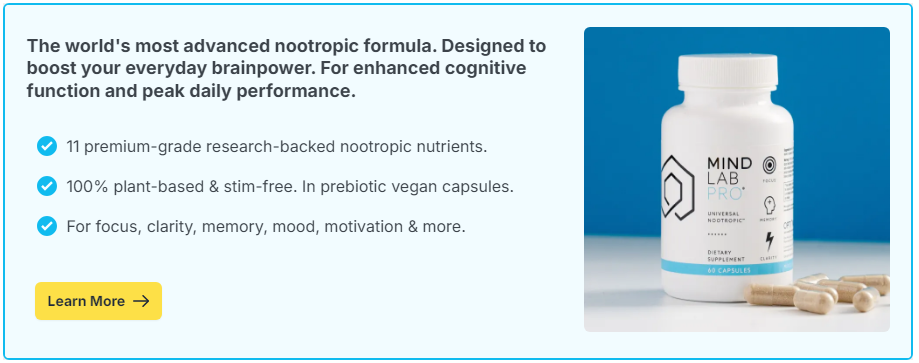
Wake up. Work eight hours. Go home. Repeat.
This rhythm has defined modern life for over a century—but your brain never signed off on it. The standard 9-to-5 schedule, with its roots in industrial-era labor policies, was designed around factory productivity, not mental performance. And yet here we are, trying to force our modern, overstimulated minds into an outdated mold—often with disappointing results.
It’s no wonder so many of us feel burned out, distracted, or mentally misaligned. The truth is, your brain doesn’t work the same way all day long—and it definitely doesn’t peak for eight straight hours. Understanding how your cognitive rhythms actually function can help you unlock sharper focus, smarter breaks, and more sustainable energy.
It’s not about working more. It’s about working when your brain is ready.
Contents
- Where the 8-Hour Workday Came From
- How Your Brain Actually Works During the Day
- Chronotypes: Not Everyone’s a Morning Person
- The Focus Cycle: Why 8 Hours of Straight Work Fails
- Designing Your Day Around Your Brain
- Supporting Your Brain Through Its Natural Cycles
- Rethinking Breaks, Rest, and Mental Recovery
- Why the 8-Hour Model Persists (and How to Escape It)
Where the 8-Hour Workday Came From
The 8-hour day wasn’t born in a neuroscience lab—it was born in the factory. In the late 1800s, workers in the U.S. and Europe routinely labored for 10 to 16 hours a day. Labor activists fought to divide the day into equal thirds: “Eight hours for work, eight hours for rest, and eight hours for what we will.”
It was a noble—and necessary—movement for its time. But today’s knowledge economy doesn’t run on steam engines. It runs on attention, memory, problem-solving, and emotional regulation. And these systems don’t follow a flat, 8-hour curve.
How Your Brain Actually Works During the Day
Your cognitive energy ebbs and flows throughout the day. These changes are governed by biological rhythms, including your circadian rhythm (the 24-hour sleep-wake cycle) and ultradian rhythms (shorter 90–120 minute focus cycles).
Most people experience predictable peaks and valleys in mental performance over the course of a day. Here’s a general pattern for the average chronotype (a “morning-neutral” person):
- 8–11 AM: Peak focus and analytical ability
- 11 AM–1 PM: Slight decline in attention; still good for structured tasks
- 1–3 PM: Post-lunch dip; creativity and focus decline
- 3–6 PM: Second wind; energy and mood often rebound
- 6–9 PM: Good for reflective thinking and learning
Of course, this varies based on your individual biology—and that’s where chronotypes come in.
Chronotypes: Not Everyone’s a Morning Person
Your chronotype determines your natural sleep-wake preferences and energy timing. Some people leap out of bed at 6 AM with ideas ready to fly. Others don’t hit their cognitive stride until after noon. These tendencies are partially genetic, and they influence when you should ideally tackle different types of work.
The Four Most Common Chronotypes:
- Lions (early risers): Peak before noon, crash early
- Bears (most common): Follow the sun; mid-morning to mid-afternoon peak
- Wolves (night owls): Peak in the late afternoon and evening
- Dolphins (light sleepers): Unpredictable patterns; best mid-morning
Trying to force a wolf into a lion’s schedule isn’t just inefficient—it can be cognitively damaging. That’s why personalized scheduling is far more effective than universal time blocks.
The Focus Cycle: Why 8 Hours of Straight Work Fails
Even during your peak hours, your brain doesn’t sustain attention indefinitely. Cognitive performance operates in ultradian cycles—roughly 90 minutes of focus followed by 15–30 minutes of required rest.
Pushing through that natural dip leads to mental fatigue, more errors, and reduced creativity. That’s why elite performers—from musicians to athletes to high-level executives—often work in deliberate sprints rather than marathons.
Signs You’re Ignoring Your Focus Cycles:
- Your eyes glaze over but you keep typing
- You reread the same paragraph multiple times
- You start reaching for your phone or snacks out of boredom
Instead of ignoring these signals, honor them. Step away. Move. Hydrate. Let your brain reset so it can return stronger.
Designing Your Day Around Your Brain
Rather than forcing your mind to conform to an arbitrary schedule, reverse the process: build your schedule around your brain’s rhythm.
Try This Template:
- Early peak? Do creative or analytical work first thing
- Midday dip? Schedule meetings, admin, or recovery
- Afternoon second wind? Tackle strategic planning or learning
- Evening alertness? Save reading, brainstorming, or writing
You can also apply this logic weekly. For example, many people have more willpower and focus early in the week and more social or creative energy later. Align your workload accordingly.
Supporting Your Brain Through Its Natural Cycles
Even with a smart schedule, modern life is demanding. That’s where strategic support comes in. Many people are now using natural nootropic supplements to optimize performance during their focus windows. Compounds like Rhodiola rosea, citicoline, and L-theanine can enhance mental clarity, reduce stress, and support energy metabolism—without the crash of caffeine. Some nootropics work best when timed with your personal chronotype or cognitive peaks, acting as accelerators during your brain’s natural highs.
It’s not about pushing harder. It’s about supporting smarter.
Rethinking Breaks, Rest, and Mental Recovery
One of the biggest problems with the 8-hour model is that it ignores recovery. But the brain—like any high-performance system—needs time to recharge. Skipping breaks leads to slower thinking, more rework, and a higher risk of burnout.
Instead, structure your day like this:
- Focus: 90-minute blocks of deep work
- Recover: 15–20 minutes of movement, light exposure, or mindfulness
- Recharge: 30–60 minutes of food, nature, or social connection midday
Over time, this rhythm boosts not just productivity—but mental stamina and clarity.
Why the 8-Hour Model Persists (and How to Escape It)
So if the 8-hour workday is so misaligned with how we think, why is it still the norm?
Because it’s easy to measure, institutionalized, and based on visibility—not output. But as more people move into knowledge work and flexible environments, this model is increasingly outdated.
To escape it:
- Track your focus patterns across the day for a week
- Identify your personal peak and dip windows
- Restructure your schedule—even slightly—to protect your best mental hours
- Build a team or work culture that values outcome over hours
It’s not about working less or more. It’s about working right.
Your brain was never designed for the assembly line. It was designed for pattern recognition, creative insight, emotional nuance, and flexible adaptation. And it works best when its rhythms are respected—not regimented.
The myth of the 8-hour workday is finally crumbling. In its place, a new model is emerging—one where mental performance is driven by insight, rhythm, and intentional rest. One where quality beats quantity, and clarity replaces exhaustion.
Because the future of work isn’t about how long you sit at your desk. It’s about when—and how—you show up with a brain that’s actually ready to think.

